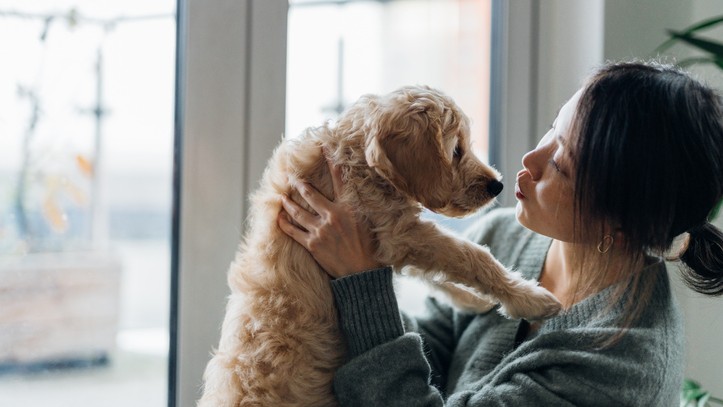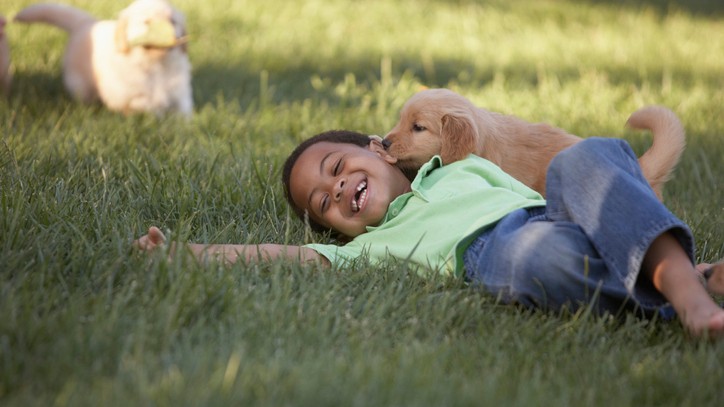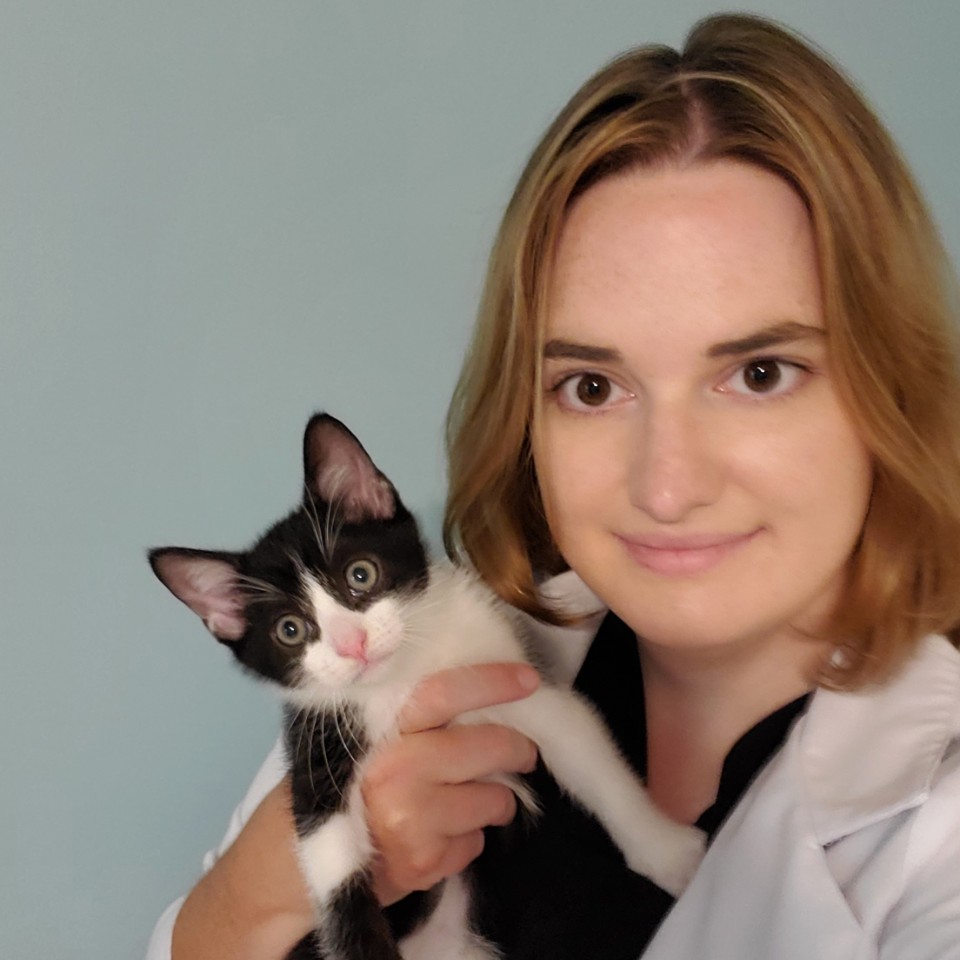How to play with a puppy: Are you getting playtime wrong?
Want to know how to play with a puppy? Here’s some expert advice on getting it right, according to a vet

Learning how to play with a puppy is one of the most important things pet owners can do for themselves and their dog. You might not think it, but playing is an important part of your pup’s behavioral and social development. It’s also a brilliant way to bond with your canine companion and create happy memories with them.
But are you left wondering where to start when it comes to playing with your dog? Investing in some of the best puppy toys can help you connect with your pup. Especially if you take a bit of time to find out what toys they do and don’t like. But while doing so, you’ll also need to establish some basic rules, so you know how to play with your dog safely, while helping them burn off some energy and improve their strength and stamina.
To help you learn how to play with your puppy, we spoke to Dr. Elizabeth Racine, who is a small animal general practice veterinarian covering all things pet-related. From teaching your puppy manners to socializing your pooch, Dr Racine shares some top tips on how to play with your puppy and get the most out of your time together.
Offer plenty of toys to stimulate your puppy
Puppies have a variety of needs and play behaviors, including chewing, digging, tugging, and chasing.
Puppies are learning rapidly, and they do much of this through play. This is why it is important to give them a variety of toys so that they can experiment with different shapes, sizes, and textures. During play, they will also develop skills that would have been essential to their wild ancestors, such as chewing, digging, tugging, and chasing.
So try a variety of different toys so that you can work out what your puppy enjoys the most! You could also experiment with puzzle toys and slow feeders, which will help to get their brains really working. Try hiding toys and treats around the house or garden to make your own doggy scavenger hunt, or have a go at making an obstacle course.
Rotating his toys, by only keeping a small number of them out at a time, will help keep things fresh and interesting. Swap them every couple of weeks to stop your puppy from getting bored.
Make sure you never use non-toy items though like shoes as this will cause confusion and may lead to your possessions being chewed and broken. Avoid sticks and stones too and these can lead to serious injury. Stick to dog-safe toys and check them regularly for wear and tear to keep your pup safe.
Avoid games involving your hands and body
One of the most common complaints from new puppy owners when figuring out how to play with a puppy is nipping or biting during play. This is a normal play behavior. If you’ve ever watched a group of puppies playing, you may notice that they jump on each other, nip, or tug on each other’s ears, tails, and limbs as a way to initiate play. Your puppy may try the same approach with you, nipping at moving hands or legs. Although this is normal play behavior, it still hurts, and is definitely not something we want to encourage! Whilst small puppy bites are tolerable you will feel quite differently when your dog is fully grown, so it's important to set boundaries early on. For more ways to stop them nipping, take a look at this guide on how to train a puppy not to bite.
To help your puppy learn to play more appropriately, make sure you aren’t sending mixed signals. Never play with your puppy using your hands or body – including wrestling, roughhousing, or hand-chasing games. Doing so will teach them that it’s okay to use your body as a chew toy. Instead, if your puppy gets nippy during play, redirect your puppy onto a more appropriate chew toy. If that doesn’t work, put your hands behind your back, or simply get up and walk away. Your puppy will soon get bored with the lack of attention. With patience and consistency, your puppy will learn that playtime ends when he gets too rough!
Like most pet parents, you might be wondering, ‘How many toys should a puppy have?’ This guide has the answers you’re looking for.
Choose a good time to play
Try and play with your puppy when he is feeling energetic. Don’t disturb him if he is having a nap, rest is important to puppies. Similarly getting him all wound up just before bedtime may not be the best idea either! Try and avoid distracting him around mealtimes and give him a bit of time to digest his food before playing.
If you are unsure, then follow your pup’s lead. If he seems lively and wants to engage with you, then go for it!
Teach your puppy good play time manners
One common myth among pet owners when it comes to how to play with a puppy is that you should never play tug-of-war games or allow them to 'win' the game. Contrary to popular belief, this type of play won’t cause behavior problems, but it is important to establish some ground rules to teach your puppy good manners. Make sure you’re always the one who initiates and ends the game. This means that your puppy is not allowed to start a game by tugging on you or your clothes, or by keeping things away from you.
While it’s fine for your puppy to 'win' the game of tug and wander off with the best rope dog toys, it’s important to also teach your puppy a basic 'drop' or 'give' command so that you can take away any inappropriate items he may find without seeming like you’re initiating a game of tug. Finally, your puppy must learn that any contact of his teeth on you or your clothing – even accidentally – ends the game immediately.
Supervising children when they play with your puppy is important, to ensure they are giving out consistent messages and are not accidentally encouraging any bad behaviors. Also, children are less likely to be able to read your pup’s body language and are at greater risk of a nip, so make sure everyone stays safe.

Teach your puppy new tricks
Many pet owners think of training as being boring, tedious, or time-consuming. But training can also be a lot of fun. Playtime is a great time to incorporate some positive reinforcement training into your puppy’s daily routine.
You can also incorporate basic commands during your play sessions, like asking your puppy to 'drop' a toy or 'sit' before you throw the ball. Every interaction is an opportunity for your puppy to learn, so make sure you keep your playtime fun, upbeat, and rewarding for your pup!
Training is an important part of owning a puppy, but it shouldn’t be seen as a chore! Training can be a lot of fun and an excellent way of bonding with your dog, and you can build it into your daily routine. Instead of using the best puppy treats as your training reward, try having your puppy do some work in exchange for a few minutes playing tug with a favorite toy. Try and engage your pup during these sessions by throwing in some basic commands. Ask your puppy to ‘drop’ a toy or ‘sit’ before you throw the ball for him. He will be eager to please if he knows it will result in fun and games with you!
As your puppy grows and matures, you can even start to add more formal activities, like nose work or agility training, to your repertoire. Your puppy will be learning all the time from these interactions, just make sure you keep playtime fun and upbeat, so that it is rewarding for them!
Don’t forget to socialize!
Playing is an important part of bonding with your puppy, but it’s also essential for your puppy to learn to play with other dogs, too. Exposing your puppy to dogs of varying ages and sizes in a controlled manner will help him feel more comfortable with unfamiliar dogs in the future, and may prevent some puppy behavior problems. Always directly supervise your puppy while they interact with other dogs, especially if they're meeting them for the first time.
While it’s normal for dogs to sometimes play a little rough, be sure to monitor for any signs of stress or anxiety in either dog, such as looking away, crouching, yawning, or baring their teeth. If you notice these signs, end the interaction quickly and calmly to prevent it from escalating. Puppy obedience classes are a great opportunity for your pup to make friends his own age – just make sure you check with your veterinarian and your trainer regarding your puppy’s vaccination status before they begin classes! It’s also a good opportunity for you to widen your social circle too.
How long to play with a puppy
Playtime is an important part of your puppy’s daily routine for both physical and mental health and wellbeing. Your puppy needs active playtime with you every day. Aim to get at least an hour of playtime and exercise a day for optimal health. However, bear in mind that puppies are like small children, and do need some downtime and naps as well. Constant stimulation can be exhausting.
However, if your dog can’t get enough of the fun, you might want to check out our guide on how to tire out a puppy.
Never push your puppy to exercise when he is tired or force him to participate in sustained exercise, like going for a run, as this can be damaging to his developing musculoskeletal system. A good rule of thumb is that your puppy should only exercise the way he would naturally play with other puppies of the same age. So, romping around with some toys in short bursts is okay, but tackling an agility course or running a mile is likely to be too much sustained activity for your pup to handle at this age.
It’s also important to make sure your pup is always enjoying playtime. If at any point during the game your puppy seems stressed, wary, or anxious, it’s time to stop what you are doing and reassess. Try moving on to a different activity or see if your puppy wants to rest. Play sessions should be short, upbeat, and fun! Try not to completely wear your puppy out, and leave him wanting more. This will help him become engaged and interested in the next play session.
If your puppy starts misbehaving during a play session, never punish or shout at him. Some dogs will feed from negative attention as well as positive. The best thing to do is to stop the play session immediately and ignore him until he calms down, or try and redirect his energy towards another more appropriate activity.
Fun and positive play sessions will improve your puppy’s confidence as well as teach him how to play and interact appropriately.
Get out and have fun!
Puppyhood passes all too quickly, so be sure to make the most of it with lots of play and fun experiences for both you and your pup. This is a prime time for your puppy to explore and try new things, so don’t be afraid to get creative! With a variety of toys and games – and a few positive rewards – you and your puppy will be having fun in no time.
Looking for more? We answer; should you play tug of war with your puppy? If you’re struggling to tell the difference between play and puppy aggression, this guide will teach you how. For other ways to stop them nipping, take a look at this guide on how to stop a puppy biting.

Graduating from the University of New Hampshire in 2012 with a degree in animal science, Dr Racine went on to study at the Atlantic Veterinary College shortly after, where she became a doctor of veterinary medicine. Along with veterinary behavior, and nutrition, Dr Racine has a keen interest in internal medicine. When she’s not helping animals back on their feet, she enjoys playing trampoline dodgeball, hiking with her beagle Dasher, and spending time with her three mischievous cats.
PetsRadar Newsletter
Get the best advice, tips and top tech for your beloved Pets
Dr. Elizabeth Racine is a small animal general practice vet covering all things pet health and wellness. Her special interests include veterinary behavior, nutrition, and internal medicine.
As a freelance writer, Dr. Racine has written content for major companies in the industry such as the American Kennel Club, Merck Animal Health, Bayer PetBasics, Elanco, and CareCredit. In her free time, Dr. Racine enjoys playing trampoline dodgeball, hiking with her beagle Dasher, and spending time with her three mischievous cats.
